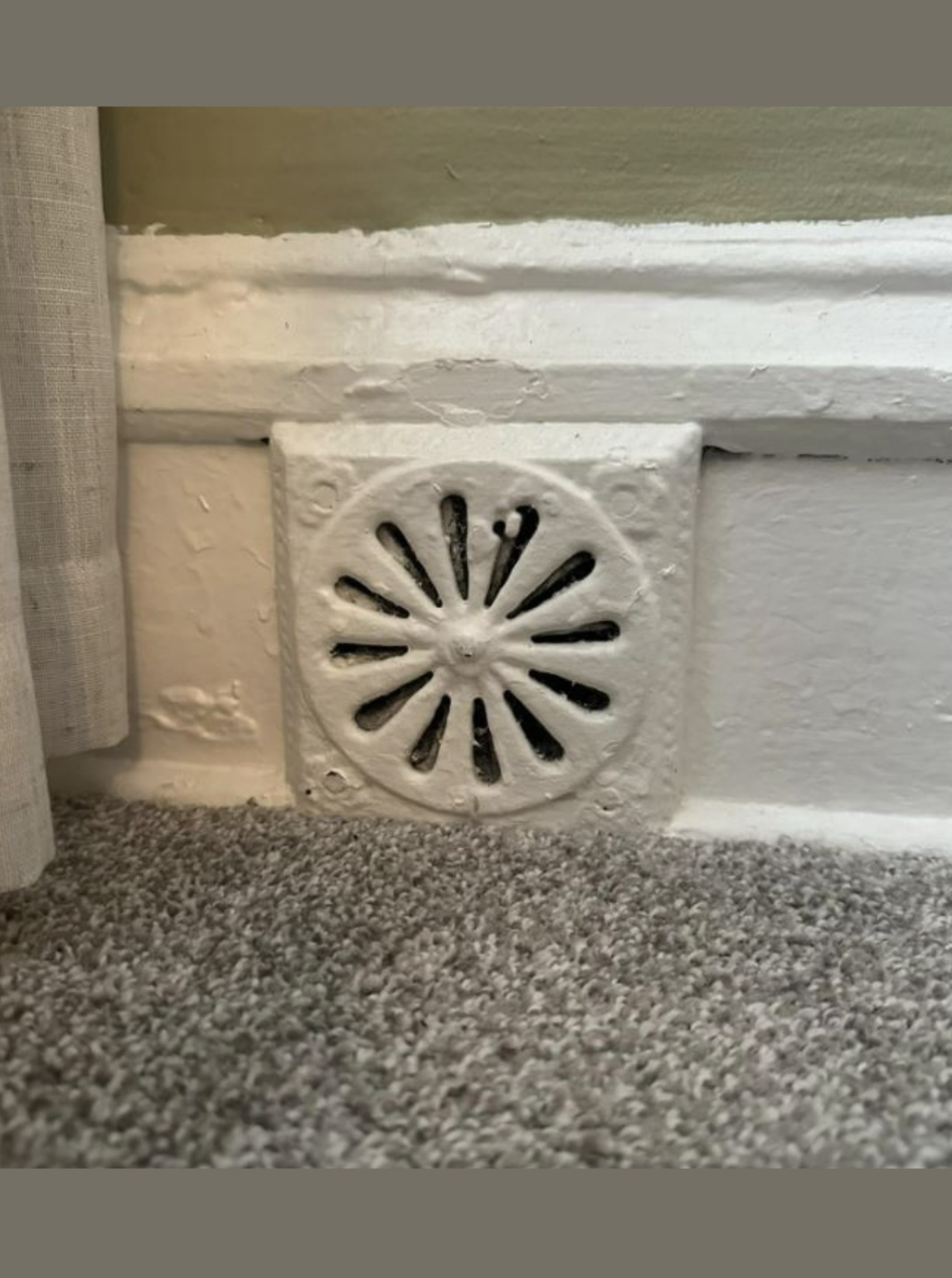🏡 Vents as a Timeline of Design
Your home breathes.
And vents are its lungs.
But long before central heating and air conditioning, homes relied on natural airflow to stay comfortable.
In the 1800s and early 1900s, homes were designed with ventilation in mind:
Hot air rose, cool air sank
Vents in floors, walls, and ceilings allowed air to circulate
No machines. No noise. Just physics.
These vents weren’t just functional — they were architectural signatures.
And each era left its mark:
Victorian (1837–1901)
Intricate cast iron, floral patterns
Ornate, dramatic, detailed
Arts & Crafts (1900–1920)
Simple wood, geometric lines
Handcrafted, honest materials
Art Deco (1920–1940)
Sleek metal, sunburst patterns
Glamour, symmetry, modernity
Mid-Century (1950s)
Rectangular, minimalist grilles
Function over form
Each vent is a time capsule — quietly whispering the design language of its age.
🎨 More Than Metal: Vents as Hidden Art
Look closely at an old vent.
You’ll see:
Scrollwork like lace in iron
Geometric precision in hand-carved wood
Symmetry and balance in every line
These weren’t mass-produced.
They were crafted by artisans — blacksmiths, woodworkers, metalworkers — who took pride in turning the utilitarian into the beautiful.
And unlike today’s flat, plastic vent covers, these were meant to be seen.
They weren’t hidden.
They were highlighted.
A vent wasn’t just a hole in the floor.
It was a design feature.
🛠️ Why Modern Vents Feel So… Empty
Today, most vents are:
Plain
Functional
Forgettable
We cover them with rugs.
We paint over them.
We treat them like flaws.
But in doing so, we’ve lost something:
The soul of the space.
Old vents didn’t just move air.
They added:
Texture
Warmth
History
They reminded us that even the smallest details matter.
🔍 How to Appreciate the Vents in Your Home
Even if you don’t live in an old house, you can still honor this quiet design hero.
1. Look Down
Stop walking over vents like they’re nothing.
Pause.
Look.
Appreciate the pattern.
Notice the craftsmanship.
2. Clean & Restore
Gently dust or vacuum old vents
For cast iron: use steel wool and a light oil to prevent rust
For wood: wipe with a damp cloth and beeswax polish
Bring back their shine — not to impress, but to honor.
3. Highlight, Don’t Hide
Arrange furniture to frame the vent, not cover it
Use a small rug beside it, not over it
Paint the floor around it a contrasting color to make it pop
Let it be seen.
🏛️ A Symbol of Thoughtful Design
The old vent is more than a relic.
It’s a reminder that:
Function and beauty can coexist
Small details shape how a space feels
Good design doesn’t shout — it whispers
In a world of smart homes and instant everything, the vent stands quiet and strong — doing its job, looking good, asking for nothing.
🧠 Final Thoughts: Sometimes the Most Meaningful Design Is the One You Almost Miss
We chase trends.
We buy statement pieces.
We redecorate every few years.
But the most enduring design elements?
They’ve been underfoot all along.
That cast-iron vent in your hallway.
That carved wood register by the door.
They’re not just parts of your home.
They’re quiet guardians of comfort.
Unsung artists of airflow.
Timeless touches of craftsmanship.
So next time you walk past a vent…
Don’t step over it.
Stop.
Look.
See it.
Because sometimes, the difference between a house and a home…
Isn’t in the furniture.
It’s in the vent.
And once you notice it?
You’ll never take it for granted again.
